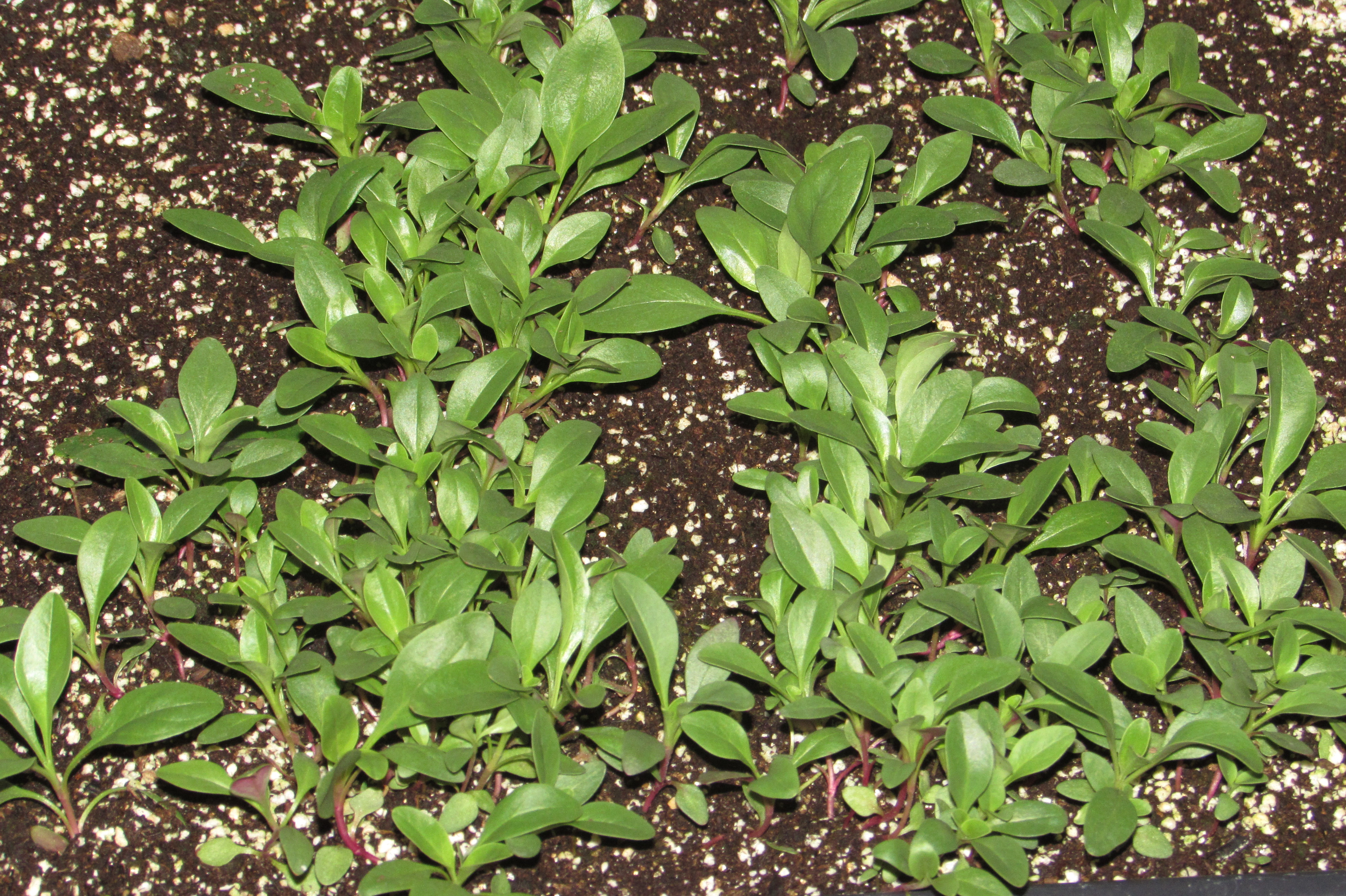Annuals are the easiest plants from seed. Many of them respond well to direct sowing in the garden. Others, like peppers and tomatoes, or petunias, benefit from starting a few weeks before you plant them in the garden. I ran into a customer the other day and she asked me if it is too early to start basil inside. The short answer is yes. Basil needs a lot of heat to do well. It languishes in cool temperature. It needs a lot of light. Start basil about four to six weeks before your last frost in the spring, or even better, direct sow. If you haven’t had good luck with seeds, try this: When the temperature is warm enough, buy a few basil plants, put them in a bed, or row, and sow basil seed in between. The plants will remind you to water–seeds need to stay moist to germinate. I think a lot of people fail with seeds because they forget to water them. You can harvest basil from the plants you bought first, and then as summer goes on, you can harvest basil from the ones you grew from seed. It will be your best basil year ever.
Some native plants are not too difficult from seed. Most penstemon need to be cold stratified before they will germinate, but after that they are easy. Here’s Penstemon glaber, in the seed flat, ready to transplant.
I’m happy to have Chilopsis linearis (Desert Willow) germinating. This is from seed from Alplains, a Colorado seed company that has an extensive list of natives. This particular seed comes from the hardiest strain of chilopsis. It’s a great plant to attract hummingbirds. 
Seeds are germinating, spring is in the air!
]]>Following that logic, it doesn’t take much thought to figure out that now is the time to divide or move peonies. Peonies are incredibly long lived, and somewhat slow to spread, so unless you have one that is very old, or that is in the wrong place in the garden, there’s really no need to divide or move them. Still, “when should I move peonies?” is one question we get a lot.
Here’s a quick list of plants that do benefit from fall division: Phlox paniculata (tall garden phlox); Monarda (bee balm); Salvia nemerosa (meadow sage); Stachys lanata (lambs-ear); some penstemons including Penstemon glaber, Penstemon pinifolius, and Penstemon barbatus; and, Leucanthemum superbum (shasta daisy).
Any plant that starts to die out in the center, and flop over onto its neighbor, is hinting that it would appreciate division. When you divide your plants, make sure you get both a leafy stem and a root with each section. Every plant is a little different, but when you start to pull them apart, you’ll see how they grow and what goes with what.
It’s impotant to note that there are some plants that don’t like division at all and will most likely die if you attempt it: Aquilegia caerulea (columbine); Gypsophila paniculata (baby’s breath); Linum lewisii (blue flax); Alyssum saxatile (basket of gold); and Lupinus sp. (lupine).
You’ll start to see a pattern in how the plants that can be divided grow compared to the ones that can’t. If a plant grows from a single growing point and has a taproot, it’s not a candidate for division. Once you start, you’ll get addicted to this process of making free plants.
In the picture below you can see a single division of Penstemon glaber. There are some new leaves starting on the stem. This one small piece, when replanted in your garden, will make a new plant that can grow to 12″ wide by the end of next summer. I love this penstemon, it’s a tough native, it blooms a long time, and it has lived in my garden for 20 years!
]]>

